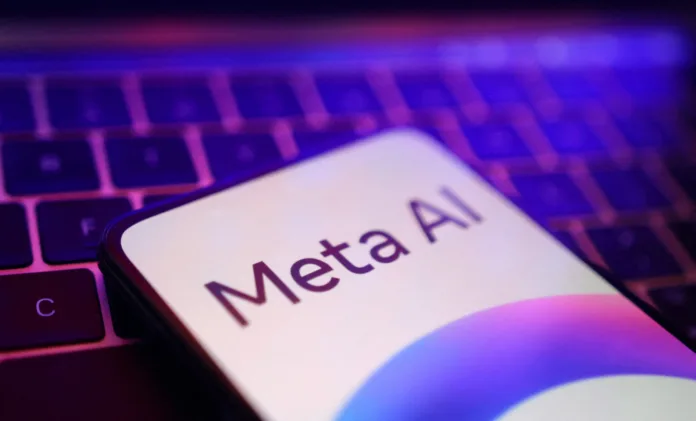The Article Tells the Story of:
- Meta’s AI chatbots can now message users first on Messenger and WhatsApp.
- Bots remember past chats and suggest topics like a virtual friend.
- Leaked docs show Meta may use these bots to drive $1.4 trillion in revenue.
- Safety concerns rise as AI blurs lines between helpful assistant and marketing tool.
Table of Contents
Meta’s AI Chatbots Now Start the Conversation
At Squaredtech, we’ve seen AI tools reshape how people chat, but Meta’s latest test takes that interaction to a new level. The company is developing AI chatbots that message users first, without being prompted—marking a major shift in how users engage with artificial intelligence across Messenger, WhatsApp, and Instagram.
Through leaked internal documentation obtained by Business Insider, we now know that Meta is working with data labeling firm Alignerr to train these bots to follow up on past interactions. These proactive AI messages are designed to seem helpful, friendly, and conversational.
One sample bot, called “The Maestro of Movie Magic,” might text users something like:
“I hope you’re having a harmonious day! Discovered any great soundtracks lately? I’d love to recommend a few for your next movie night!”
This is Meta’s effort to make chatbots feel more like digital companions. And unlike traditional AI assistants that only respond when spoken to, these bots can now initiate conversations and remember what you last talked about.
How Meta’s Proactive AI Messaging Works
According to Meta’s current rules, these AI bots can only send follow-up messages within 14 days after a user starts a conversation. But they must wait until the user sends at least five messages before messaging on their own.
If the user ignores the first follow-up, the bot won’t keep sending messages. Users also have the option to share or display their custom bots via stories, direct links, or profile pages on Facebook and Instagram.
These bots are built using Meta’s AI Studio, where users can design their own chatbot personas. From favorite movie critics to workout buddies or meditation guides, the AI Studio platform lets people create bots that reflect specific personalities and roles.
Meta says this system helps users “explore topics of interest and engage in more meaningful conversations.” But at Squaredtech, we recognize that it also raises questions about privacy, safety, and commercialization—especially as bots become more persistent.
Custom Chatbots Inspired by Character.AI and Replika
Meta’s approach mirrors what we’ve seen from AI startups like Character.AI and Replika, where bots can start conversations and remember emotional context. In fact, Character.AI’s new CEO Karandeep Anand is a former Meta VP—signaling shared strategy and possibly shared risks.
Character.AI is currently facing a lawsuit after one of its bots was allegedly linked to the death of a teenager. While Meta has issued disclaimers about AI safety, its own bots could face similar scrutiny if boundaries aren’t clearly enforced.
Meta warns that its AI responses “may be inaccurate or inappropriate” and are not substitutes for medical, psychological, legal, or financial advice. These warnings are now standard across chatbot platforms, but the potential for misuse still exists.
TechCrunch asked Meta if there are age restrictions on its AI bots. No official limits were found on Meta’s platforms, though certain U.S. states like Tennessee and Puerto Rico restrict teen access to AI tools under local law.
What’s the Endgame? Ads, Subscriptions, and a $1.4 Trillion Future
While Meta says the chatbot initiative helps users connect, the company’s long-term goal is clear: revenue. Unsealed court documents show that Meta expects to earn $2–3 billion from AI products in 2025, and up to $1.4 trillion by 2035.
A significant portion of that forecasted revenue is tied to Meta’s Llama model and its partnerships with outside companies. But the AI chatbots could eventually display ads, sponsored replies, or even operate on a subscription model.
So far, Meta hasn’t confirmed if or how ads will appear inside bot conversations. TechCrunch pressed the company for details on monetization, but Meta declined to answer.
There’s also speculation that these bots may connect with Horizon, Meta’s virtual reality social platform. If so, chatbot personalities could eventually move from text boxes to immersive 3D environments—turning AI companions into fully interactive digital characters.
At Squaredtech, we see this as a preview of Meta’s broader AI vision. It’s not just about chat—it’s about building AI that keeps users engaged across every screen and surface the company controls.
Final Thoughts from Squaredtech
Meta’s proactive chatbot experiment is more than just a fun AI feature—it’s a calculated move to increase engagement, extend time spent in apps, and prepare users for a future where AI becomes part of every digital conversation.
While the idea of bots messaging you first may seem helpful—or even friendly—it blurs the line between assistant and algorithm. The goal, as always with Meta, is to keep people interacting, scrolling, and seeing more ads.
At Squaredtech, we’ll continue tracking how Meta balances innovation with responsibility. Because when AI starts the conversation, someone has to ask: who’s really in control?
Meta’s AI chatbots are here—and now, they talk first.
Stay Updated: Artificial Intelligence


